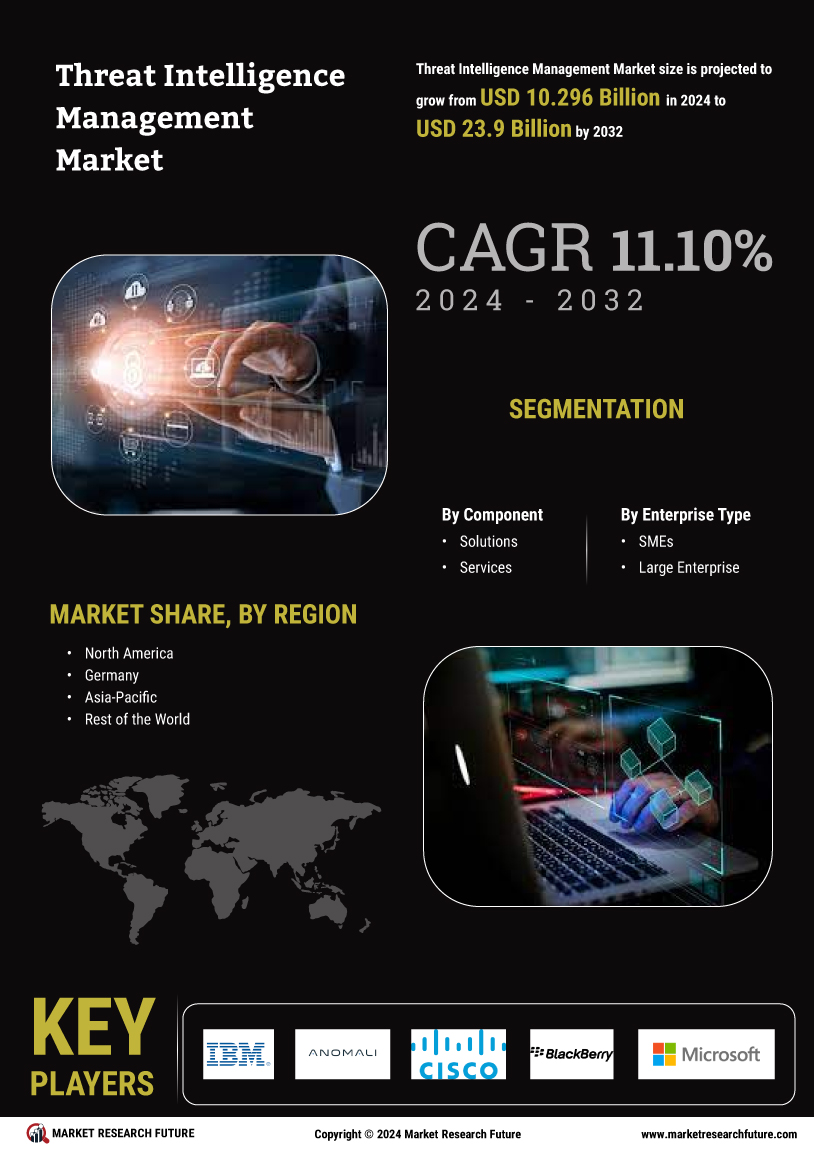Rising Cybersecurity Threats
The increasing frequency and sophistication of cyber threats is a primary driver for the Threat Intelligence Management Market. Organizations are facing a surge in cyberattacks, including ransomware, phishing, and advanced persistent threats. According to recent data, the global cost of cybercrime is projected to reach trillions of dollars annually, compelling businesses to invest in robust threat intelligence solutions. This heightened awareness of cybersecurity risks has led to a growing demand for threat intelligence management tools that can provide timely and actionable insights. As organizations strive to protect their assets and maintain customer trust, the need for effective threat intelligence management becomes paramount, driving market growth.
Adoption of Cloud-Based Solutions
The shift towards cloud computing is reshaping the Threat Intelligence Management Market. Organizations are increasingly adopting cloud-based threat intelligence solutions due to their scalability, flexibility, and cost-effectiveness. The cloud enables real-time data sharing and collaboration, allowing organizations to respond swiftly to emerging threats. Market data indicates that the cloud segment is anticipated to witness substantial growth, with many businesses migrating their threat intelligence operations to cloud platforms. This transition not only enhances operational efficiency but also facilitates the integration of advanced analytics and machine learning capabilities, further driving the demand for threat intelligence management solutions.
Growing Importance of Data Privacy
The rising emphasis on data privacy is a critical driver for the Threat Intelligence Management Market. As consumers become more aware of their data rights, organizations are compelled to prioritize data protection measures. This shift is prompting businesses to invest in threat intelligence management solutions that can help identify and mitigate potential data breaches. The market is witnessing an increase in demand for tools that provide insights into data vulnerabilities and threats. Furthermore, as data privacy regulations become more stringent, organizations are likely to enhance their threat intelligence capabilities to ensure compliance and protect sensitive information, thereby fueling market growth.
Regulatory Compliance Requirements
The evolving landscape of regulatory compliance is significantly influencing the Threat Intelligence Management Market. Organizations are increasingly required to adhere to stringent regulations regarding data protection and cybersecurity. Compliance frameworks such as GDPR, HIPAA, and PCI DSS necessitate the implementation of comprehensive threat intelligence strategies. Failure to comply can result in severe penalties and reputational damage. As a result, businesses are investing in threat intelligence management solutions to ensure they meet these regulatory requirements. The market is expected to expand as organizations seek to align their cybersecurity practices with compliance mandates, thereby enhancing their overall security posture.
Increased Investment in Cybersecurity
The escalating investment in cybersecurity initiatives is a significant factor propelling the Threat Intelligence Management Market. Organizations are recognizing the critical need to bolster their cybersecurity defenses in light of the growing threat landscape. Recent reports indicate that global spending on cybersecurity is projected to exceed hundreds of billions of dollars in the coming years. This surge in investment is driving the adoption of advanced threat intelligence management solutions that can provide organizations with the necessary tools to detect, analyze, and respond to threats effectively. As businesses allocate more resources to cybersecurity, the demand for threat intelligence management solutions is expected to rise, further contributing to market expansion.

















Leave a Comment